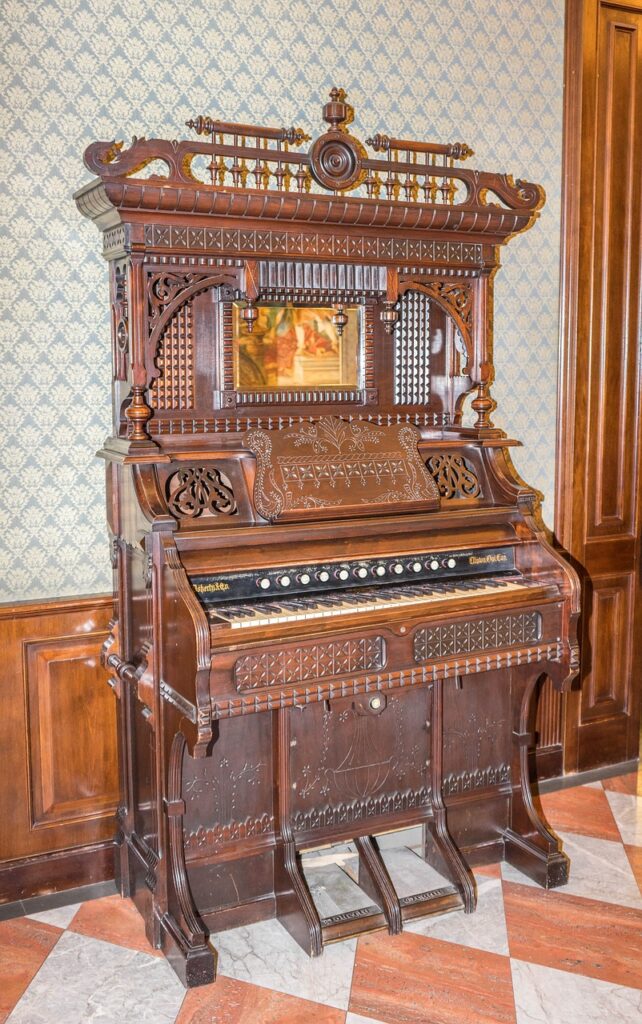The piano is a beloved and iconic musical instrument that has captivated generations with its rich sound and expressive capabilities. From its humble beginnings to its present-day form, the piano has undergone a remarkable evolution. In this article, we will embark on a journey through the history of pianos, exploring their origins, notable innovations, and the influential composers who shaped their legacy. Join us as we uncover fascinating anecdotes and historical facts that will ignite the curiosity of piano enthusiasts and music lovers alike.
Origins: The Harpsichord’s Legacy
The piano’s story begins in the early 18th century, when it emerged as a direct descendant of the harpsichord. Bartolomeo Cristofori, an Italian instrument maker, is credited with inventing the “gravicembalo col piano e forte” in the 1700s. This instrument, which translates to “harpsichord with soft and loud,” laid the foundation for the modern piano. Cristofori’s innovation introduced the mechanism of hammers striking the strings, allowing for dynamic variation in volume and expression.
Early Innovations: The Pioneers of Piano Making
In the 18th and 19th centuries, piano builders and innovators continued to refine and enhance the instrument’s design and functionality. Prominent piano makers such as Sebastian Erard and John Broadwood made significant contributions. Erard introduced the double escapement mechanism, enabling rapid repetition of notes, while Broadwood perfected the grand piano’s construction, expanding its range and tonal capabilities.
Influential Composers and the Piano’s Golden Era
The piano’s evolution coincided with a period of exceptional musical creativity. The instrument became a central tool for composers who pushed its boundaries and showcased its expressive potential. Great composers like Wolfgang Amadeus Mozart, Ludwig van Beethoven, Frédéric Chopin, and Franz Liszt were pivotal in shaping the piano’s repertoire. Their compositions explored the instrument’s dynamic range, intricate melodies, and emotional depth, leaving an indelible mark on piano music.
The Rise of the Modern Piano
The Industrial Revolution brought about significant advancements in piano manufacturing during the 19th century. The introduction of cast-iron frames allowed for increased string tension and improved stability. The development of the modern piano’s distinctive shape and design, including the use of pedals, enabled pianists to achieve nuanced interpretations and a wider range of tonal colors.
Technological Innovations and the Digital Age
As the 20th century unfolded, technological advancements began to reshape the piano landscape. The invention of the electric piano and the advent of digital technology revolutionized the instrument. Electric pianos offered portability and versatility, while digital pianos provided the ability to replicate the sound and touch of acoustic pianos with remarkable precision. These innovations widened access to piano playing and expanded creative possibilities for musicians.
The history of pianos is a testament to human creativity, ingenuity, and the pursuit of musical expression. From its beginnings as a harpsichord descendant to its present-day forms, the piano has undergone a captivating journey of innovation. Through the contributions of visionary inventors, the artistry of influential composers, and the advancements in manufacturing technology, the piano has evolved into an instrument that continues to inspire and enchant.
Today, the piano stands as a symbol of musical excellence, versatility, and emotional depth. Its timeless appeal and enduring popularity speak to its unique ability to capture the human spirit and convey the language of music.
As we reflect on the history and evolution of pianos, let us celebrate the generations of musicians, composers, and piano makers who have enriched our lives with their dedication and artistry. Whether played in grand concert halls, intimate homes, or digital interfaces, the piano remains an instrument of profound significance—a vessel through which melodies come to life, emotions are conveyed, and the power of music transcends time.

